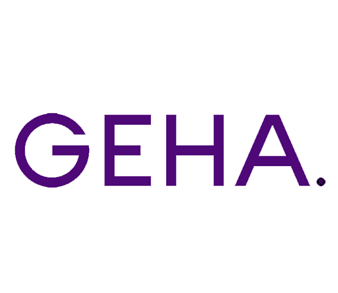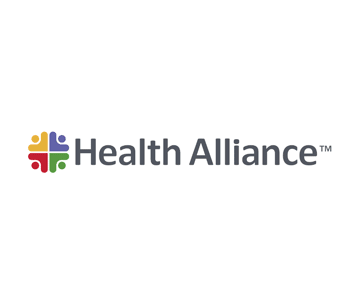Hydrocodone belongs to the drug class of opioids, which are known substances to treat moderate to severe pain. As a muscle relaxant, it can also be prescribed to suppress coughing symptoms and promote a sedated state. Hydrocodone is sometimes combined with other non-opioid drugs to relieve pain and cure other related symptoms.
When you suspect someone of hydrocodone abuse, one of the best first steps you can take is finding out what does a hydrocodone look like. Since hydrocodone has a tablet, capsule, and oral suspension forms, being aware of the key differences can help you become more specific and avoid potential poisoning or overdose.
Additionally, knowing hydrocodone colors, dosages, as well as its branded and generic kinds can help you in taking steps to intervene or keep you or your loved one safe. In this post, you will find a comprehensive list of the drug’s physical appearance and what you can do to get substance use disorder help.
Hydrocodone Physical Appearance
Hydrocodone has several known branded variants, and the most popular ones contain a combination of the drug acetaminophen. Below, you will find its common doses, colors, and milligrams per brand:
What mg is hydrocodone (different colors):
Vicodin
- 5 milligram / 300-milligram tablet: White, oval-shaped, has an imprint of “5 300” and “VICODIN.”
Norco
- 7.5 milligram / 325-milligram tablet: White, oval-shaped, has an imprint of “NORCO 729.”
- 10 milligram / 325-milligram tablet: White, oval-shaped, has an imprint of “NORCO 539.”
Aside from hydrocodone-acetaminophen combinations, there is also hydrocodone in its pure form under the brand name Zohydro. Below are the physical appearances of each capsule:
- 15 mg capsule: Green, oval-shaped, has an imprint of “Z315 15 mg.”
- 30 mg capsule: Blue, oval-shaped, has an imprint of “Z330 30 mg.”
- 40 mg capsule: Brown, oval-shaped, has an imprint of “Z340 40 mg.”
- 50 mg capsule: Dark Brown, oval-shaped, has an imprint of “Z350 50 mg.”
What does generic hydrocodone look like
Hydrocodone-acetaminophen
- 5 milligram / 325-milligram tablet: White with small red spots, wide oval-shaped, has an imprint of “16 49 LCI.”
- 7.5 milligram / 325-milligram tablet: Cream, oval-shaped, has an imprint of “T 325.”
- 15 mL / 325-milligram oral solution: Has a label of “Hydrocodone-Acetaminophen Oral Solution,” yellow, fruit-tasting liquid suspension.
- 10 milligram / 325-milligram tablet: White, oval-shaped, has an imprint of “IP 110.”
Understanding what color is hydrocodone, its corresponding dosages, and if it’s in combination with other drugs can help you prevent future cases of drug poisoning or overdose. Talking to a loved one regarding a substance use disorder issue will be much more fruitful if you also have proof that you have found such types of drugs in their possession. It is crucial to be aware of addiction symptoms and their effects.
By accurately identifying the drug, you can make your decision clear about getting help for substance use disorder. Don't see your Insurance Provider?
Learn More About Your Insurance Coverage
Signs of Hydrocodone Abuse
There are distinct signs that someone is abusing hydrocodone or other opioids. Since these drugs commonly have sedative and euphoric effects, these are the potential physical, mental, and behavioral symptoms you can observe:
Physical
- Feeling dizzy
- Sleepiness
- Difficulties in motor coordination
- Slower breathing
- Irregular or slow heartbeat
- Weak muscles
- Tinnitus (ringing sound in the ears)
Mental
- Slurred speech
- Difficulties in focusing
- Depression and anxiety when the drug isn’t taken
- Easily irritable
- Mental confusion
Behavioral
- Increased isolation
- Doctor or healthcare facility “shopping,” complaining of symptoms to acquire more of the drug
- Running out of medications before intended schedule
- Presence of drug paraphernalia or suspicious containers
- Loss of interest in previous daily pursuits such as job, relationships, or recreation
If you notice any of these signs in a loved one or have been developing these symptoms yourself, these are potential signs of growing hydrocodone abuse. It is very important to seek expert help right away, as opioid abuse can have long-term effects that can be life-threatening.
Increasingly high doses of hydrocodone taken over a long period can also lead someone to a dangerous overdose. When a person is unresponsive, has suppressed breathing, or a weak pulse, you should seek emergency help right away. Overdose can lead to coma, loss of oxygen, and death.
Other long-term effects of opioid abuse are heart, lung, and brain problems. Since hydrocodone suppresses muscle activity, constant exposure to the drug can lead to issues in cardiovascular health as well as mental function.
How to Get Help for Hydrocodone Abuse
You may be overwhelmed and wondering if there is any help available for hydrocodone abuse. There are a lot of resources and addiction counselors you can reach out to so that you can get a clearer picture on how to get the right treatment for your needs. Here are some steps to take:
Reach out to a trusted hydrocodone abuse center
A treatment center specific to hydrocodone or opioid addiction can help you get answers to any questions you might have. They can tell you what to expect during treatment, how to cover the costs of care, or how to plan an intervention if your loved one is going through substance use disorder.
Hydrocodone addiction treatment centers also have specialized facilities, materials, and staff trained to address the specific problem. This is important should you have other critical medical conditions so you are cared for round the clock.
Gather support from friends, family, and trusted experts
A strong support system is important to improve the chances of addiction recovery. If you have trusted family and friends, you can share your struggles and see if you can get help. Emotional or financial supports are helpful during the time you will be receiving formal treatment.
Alternatively, you can also talk to your physician or chosen rehab center on how you can get support. There are different things you can do to get support–whether it’s through information, financial accommodations, or other forms of assistance as you receive substance use disorder treatment.
Find resources to keep you informed
Staying informed about healthcare issues are essential to keep you and your loved ones safe. Finding trusted online resources, calling addiction treatment centers, or finding support groups as you get started in your recovery journey will help you stay accountable during the process.
Hydrocodone Abuse: Starting Treatment
It is never too late to find help for hydrocodone addiction. By knowing what the drug looks like and watching out for addiction symptoms, recovery is always possible.
Sources
Medical disclaimer:
Sunshine Behavioral Health strives to help people who are facing substance abuse, addiction, mental health disorders, or a combination of these conditions. It does this by providing compassionate care and evidence-based content that addresses health, treatment, and recovery.
Licensed medical professionals review material we publish on our site. The material is not a substitute for qualified medical diagnoses, treatment, or advice. It should not be used to replace the suggestions of your personal physician or other health care professionals.















